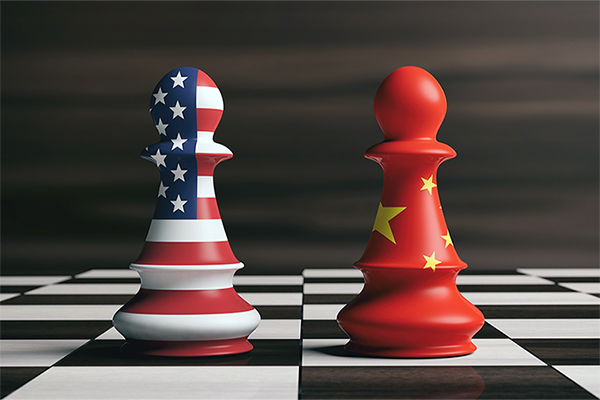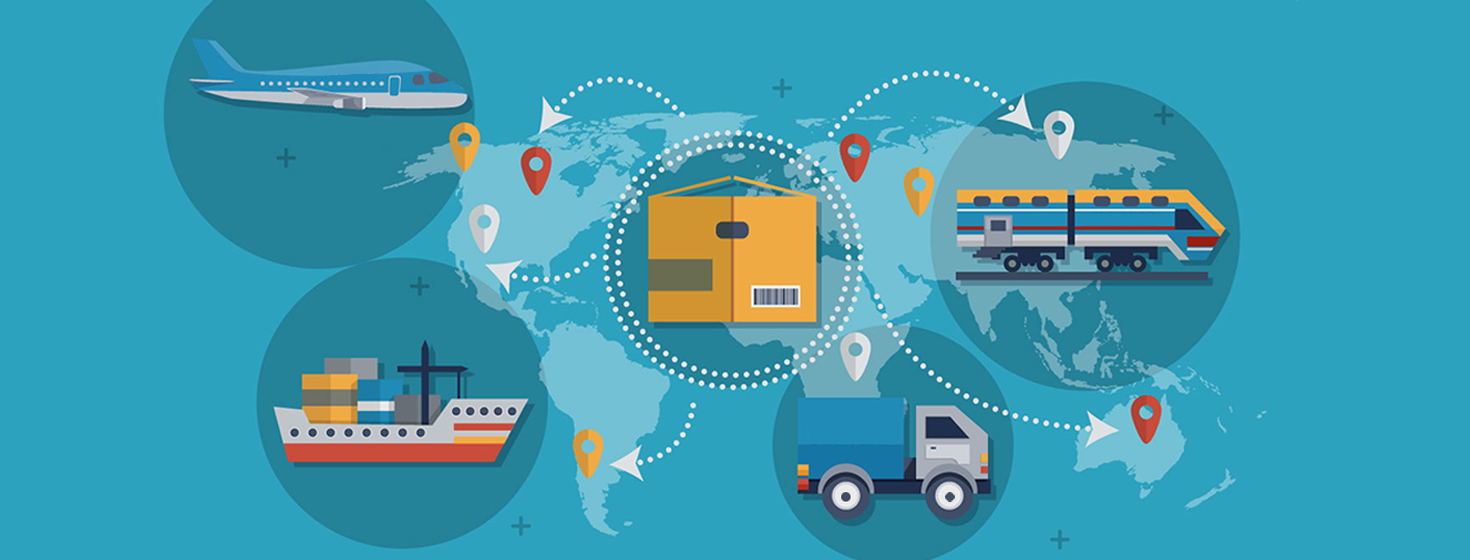US Retailers Receive Some Good News on Trump Easing China Trade Tariff Tensions

The Retail Industry Leaders Association, the National Retail Association, and the Association for Supply Chain Management welcomed President Trump's decision to delay the March 1st China tariff hike on thousands of everyday consumer products.
Shippers Express Relief
As the Retail Industry Leaders Association (RILA) convenes this week for its annual Retail Supply Chain Conference, shippers expressed relief that President Trump has called for a delay for increasing tariffs on Chinese Goods.
Had the President made good on his threat, as much as $200 billion in Chinese imports would have gone into effect on March 1st.
“We commend the President's decision to delay the tariff increase on thousands of everyday products that millions of American families want and need. These ongoing negotiations have been hanging over America's retailers causing uncertainty throughout our supply chain” said Hun Quach, vice president of international trade for RILA.
“The President has made the right decision to delay the tariff increase on $200 billion worth of goods. We look forward to continuing our work with Congress and the Administration to quickly find a path forward that removes all tariffs on everyday consumer products.”
National Retail Federation
The same sentiment was also expressed by the National Retail Federation’s President and CEO Matthew Shay this week.
The National Retail Federation issued the following statement from Matthew Shay after the administration delayed a tariff increase on Chinese goods set to take effect this week.
“We welcome the progress made between the U.S. and China and commend the administration for its efforts to address unfair trading practices. The decision to avoid a tariff hike is a positive development, and we encourage the administration to build on this momentum and reach a resolution that will eliminate uncertainty for American businesses and consumers. We look forward to continued progress and an agreement that will end tariffs and achieve a more fair and balanced trading relationship.”
According to data released by Tariffs Hurt the Heartland - a campaign backed by NRF - recent tariffs imposed by the administration cost U.S. businesses $2.7 billion in November 2018 alone. Tariffs Hurt the Heartland also released a report prepared by Trade Partnership that found American workers would lose nearly one million U.S. jobs if tariffs on $200 billion of Chinese imports increased from 10 to 25 percent.
Read: NRF on the Current State of Ecommerce Supply Chains
Avoid Hard Hits from Tariffs and Global Volatility
Christine Barnhart, Director of Industry Solutions Strategy, Manufacturing and Supply Chain at Infor wrote on behalf of APICS, that global economics can sideline any company that’s unprepared for aggressive competition and drastic shifts in pricing.
Even long-standing networks are starting to crack under pressure, as manufacturers, distributors, top brands and retailers struggle to grasp the impact of these pressures on their business models. It is more important than ever for organizations to prioritize supply chain agility and adapt to make changes as quickly and effectively as possible.
In a recent study, two-thirds of economists surveyed reported that trade tensions or tariffs are the biggest risks to their economic growth forecasts. Some companies plan to pass increased costs to customers, whether they are consumers or other businesses. Some are considering possible design changes, evolving product specs or rerouting resources through different suppliers.
As companies react, a domino effect builds momentum, bringing more and more companies into the disruption. Consequently, predicting outcomes becomes more difficult.
Even when the current political hailstorm subsides, the global landscape will still be subject to dramatic shifts. Population migration, consumer trends, regulations, resource availability, and innovations will cause large-scale fluctuations. Continuous change is the new normal. Companies that want to play in the global arena need to rewrite their playbooks.
Resilience requires out-of-the-box thinking and problem-solving. Technology can support this innovative approach. As products today tend to be highly complex, with computerized components and subassemblies coming from multiple countries, the big picture can include multiple partners and suppliers, adding to the need for well-thought-out strategies.
Modern solutions, such as predictive analytics and artificial intelligence, help make sense of multi-tiered networks and what-if scenarios. Careful planning ensures elements converge in the right place at the right time, so highly personalized customer orders can be fulfilled as needed.
Proactive Responses
Fortunately, supply chain planning and execution technologies have made huge strides in the last decade. Software providers have begun applying cloud computing, big data, business intelligence, machine learning, predictive analytics, and artificial intelligence to solutions. Such tools can help optimize inventory, meet customer demands, identify patterns and spot early warning signs of potential problems - before it is too late.
Analytics must look to the past, as well as the future, to enable companies to predict likely outcomes. This requires a unified system that underpins the entire network, providing a digital connection for collaboration and strategic planning.
When all parties in a supply chain are plugged in, information that was once locked away in data vaults can be accessed and consumed. Updates from the outer nodes of the network are made in the system and are instantly reflected in this virtual depiction of reality.
Data that falls outside of established parameters can alert users to issues or automate responses, such as putting a hold on a payment to a supplier that misses agreed-upon delivery dates.
Supply chain systems can process data from weather forecasts and automatically adjust expected delivery dates, calculate fines for late delivery or notify carriers of changes that need to be made to logistics contracts. Workflows can be created that push data to users, aiding in decision-making.
Previous solutions and possible alternative scenarios can be presented in dashboard-like views. Because the user experience is highly intuitive, even recently on-boarded personnel can play an active role in strategic execution.
A Window Into The Future
The current political storm is shining a spotlight on the importance of modern supply chain planning and execution solutions. Volatility is not going away, even when political conflicts are resolved.
Supply chain success will require network-like connectivity that engages all parties. Customers, carriers, third-party logistics providers, banks and suppliers all benefit from visibility and windows into the future.
Sharing data, while protecting the security and intellectual property, is essential when working in a global landscape and forging new relationships.
A Complex Global Trade Market
Abe Eshkenazi, the chief executive officer of the Association for Supply Chain Management (ASCM), formerly APICS writes that any new tariffs can create challenges for companies that engage in global trade.
For supply chain managers, this will increase the complexity of global trade management, which the APICS Dictionary defines as;
“The management and optimization of shipments across international borders to improve operating efficiencies and cash flows; includes ensuring compliance with all international regulations and documentation and streamlining and accelerating the movement of goods.”
The APICS Certified in Logistics, Transportation and Distribution (CLTD) designation program helps professionals prepare for the nuanced world of global trade.
APICS CLTD content includes global logistics considerations, which emphasizes an understanding of customs clearing and documentation requirements as well as how free and foreign trade zones influence duties paid and total landed costs.
Coordinating these international trade elements is an essential skill set for today's logistics professionals.
Related Article: Defining Industries for the Global Supply Chain Economy
Supply Chain Management: Beyond the Horizon White Papers
Managing the Complexity Paradigm
This paper offers insight into managing supply chain and product complexity by providing background into the complexity’s sources, a framework for understanding its drivers, and methods to manage it Download Now!
Supply Chain Issues: What’s Keeping Supply Chain Managers Awake at Night?
Although some of the themes presented in this paper may not be surprising, it is valuable to note that the executives interviewed, who represented more than 50 different firms, shared a common perspective about issues disrupting their businesses. Download Now!
Creating Value Through Procurement and Sourcing Efforts in Integrated Supply Chains
As part of the ongoing collaboration between Michigan State University’s Eli Broad College of Business and APICS Supply Chain Council, the Beyond the Horizon research project is investigating how the supply chain management discipline is evolving into the future. Download Now!
Realizing Supply Chain Success
This white paper presents initial research insights from the Beyond the Horizons project and introduces a conceptual model, named the bridge model, which can guide supply chain strategy development and decision making. Download Now!
More Resources from APICS
Article Topics
ASCM News & Resources
Supply Chain Stability Index sees ‘Tremendous Improvement’ in 2023 Supply Chain Stability Index: “Tremendous Improvement” in 2023 The Right Approach for Supply Chain Education The reBound Podcast: Innovation in the 3PL supply chain Supply Chain’s Top Trends for 2024 Require Talent Investment for Success Resilience Certificate Now Available from ASCM ASCM conference highlights importance of geopolitics in the supply chain More ASCMLatest in Supply Chain
How Much Extra Will Consumers Pay for Sustainable Packaging? FedEx Announces Plans to Shut Down Four Facilities U.S. Manufacturing is Growing but Employment Not Keeping Pace The Two Most Important Factors in Last-Mile Delivery Most Companies Unprepared For Supply Chain Emergency Microsoft Unveils New AI Innovations For Warehouses Let’s Spend Five Minutes Talking About ... Malaysia More Supply ChainAbout the Author






















